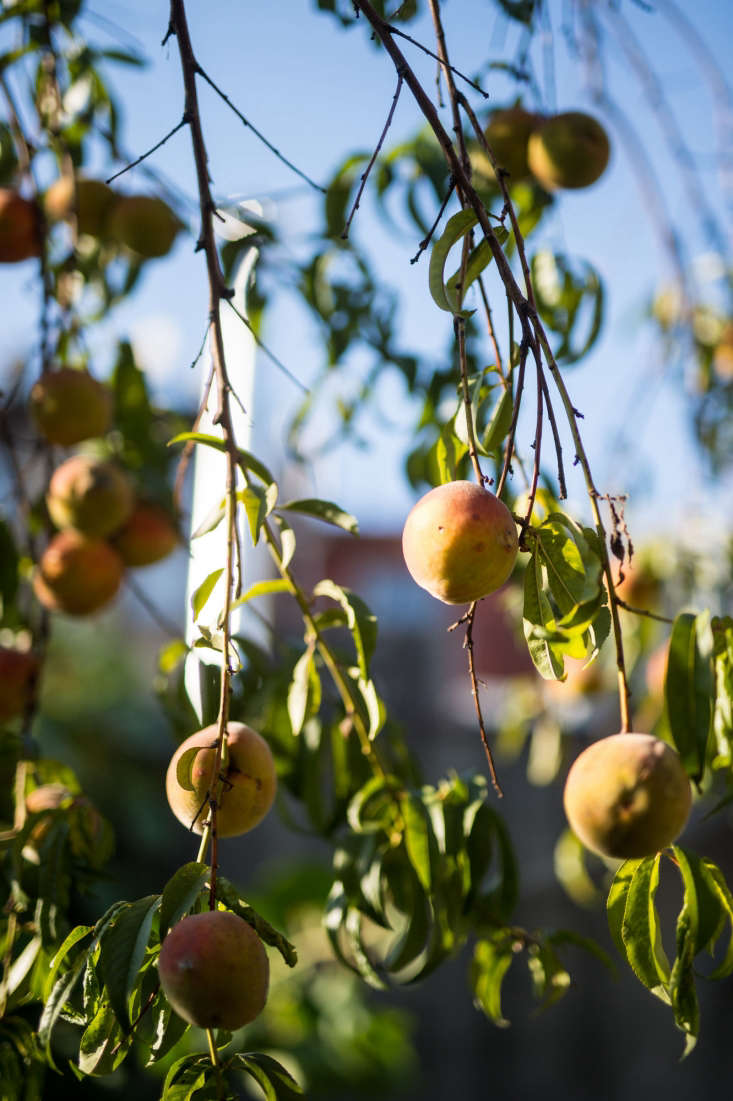Finally: excellent Chinese, fresh from a kitchen garden in Brooklyn.
Despite a recent surge of all kinds of farm-to-table restaurants, American Chinese restaurants have remained the MSG-laden exception. (Let’s face it: If you’re ordering delivery noodles on a Friday night in your pajamas, you’re probably not seeking garden freshness.) Which is why we were delighted to get an email about Kings County Imperial in Williamsburg, where co-owner Tracy Young grows heirloom Chinese vegetables in container gardens and over courtyard trellises—including “four types of cucumbers, goji berries, five types of greens, onions, eggplants, edible flowers, and yard-long beans.”
The crops make their way into the restaurant’s inventive, modern Chinese dishes. Here’s a look inside (and out).
Photography by Daniel Krieger, except where noted.

Before Young and co-owner Josh Grinker opened Kings County, the space was of questionable use. “Word in the neighborhood was that the indoor space served as an Italian men’s social club and the outdoor space was used for making wine from a Sicilian grape varietal which still grows next door,” Young says. “By the time we took over the space in 2013, the outdoor space was literally filled to the rafters with junk that took weeks to clear out, and the indoor space had been abandoned after operating as a small coffee shop.” With the design eye of Ian McPheely, and with the building’s history in mind, the team designed a restaurant that is tarnished and a little scruffy in places.

The well-worn interiors also reference Chinese design. “Ian McPheely spent tens of hours researching the traditions behind Chinese iconography and architecture,” Young says. “He wanted to help create a space that felt old-world and welcoming, as if transported from another place and time.”



Young, a lifelong gardener turned restaurateur, heads up the garden. “I grew up in a family of avid gardeners, especially my dad,” she says. “He grew everything under the sun, including asparagus, varieties of tomatoes, corn, horseradish, garlic, wax beans, broad beans, squash, lettuce, carrots, brussels sprouts, broccoli… We also had a large herb garden, fruit trees, and raspberries bushes. My sister, brother, and I didn’t actually like gardening because we got stuck weeding, picking off caterpillars, and delivering vegetables to our neighbors.”
But Young’s childhood chores come in handy at Kings County: She does all of the growing, weeding, and pruning herself. “I guess part of the inspiration behind the garden was pure nostalgia from growing up in a home where there was always the scent of earth, vegetation, and woodsmoke,” she says.

In the cleared-out courtyard behind the restaurant, Young and the Kings County team set about creating a kitchen garden that could double as a seating area. “We hired a carpenter to build the raised beds from antique timbers we found in the backyard and pulled from the ceiling, but everything else we did ourselves,” she says.
The first year was trial and error: “We got a late start and ended up [supplementing] with a lot of mint and basil transplanted from my family home in Pennsylvania.” Even now, the garden is a labor of love for Young. “Last year we got a head-start and germinated seeds in egg cartons in my apartment; it felt like I was living in a sandbox for a couple of months, but it was worth it!”
Young grows heirloom varieties of Chinese-food staples—”mostly varieties of Asian cucumbers, eggplants, and greens that we grow from seed”—that find their way onto the vegetable-forward menu (and into cocktails). Among the more unusual offerings? “I think our goji berry bushes and purple snake beans are pretty special,” she says. “There’s an edible flower called Tung Ho, which translates to ‘Garland Chrysanthemum’ and which we use as a garnish in some of our cocktails. I’m also trying my hand at growing Sichuan peppercorns this year.”
The garden maintains one vestige from its previous life: “Although it has nothing to do with Chinese cooking, I’m in love with the beautiful bunches of green Sicilian grapes that grow on the vines we’re trellising over from our neighbor’s 60-year-old vines next door,” Young says.

While a garden-to-table Chinese restaurant may be a novel concept in New York City, cooking with fresh produce is nothing new in China: “Most homes in rural communities have a small garden attached to the home, and those in more urban areas gravitate to the local market as a gathering place for the community,” Young says. “In our travels throughout China, we experienced farm-to-table cooking really as a way of life.”


Even the soy sauce is fresh from the ground: Kings County partners with a third-generation family of soy sauce makers in southern China. “They sun-ferment their soy using no preservatives or MSG, and use their grandfather’s koji starter that has been passed down through the generations,” Young says. It’s on tap at the Brooklyn restaurant.

We can’t get enough of urban restaurants with ingenious backyard kitchen gardens. Here are two more favorites in Brooklyn, so you can make a day of it:
- Restaurant Visit: An Innovative Micro Farm at Olmsted in Brooklyn.
- Restaurant Visit: Aussie Style Invades Brooklyn at Brunswick Cafe.
















Have a Question or Comment About This Post?
Join the conversation (0)